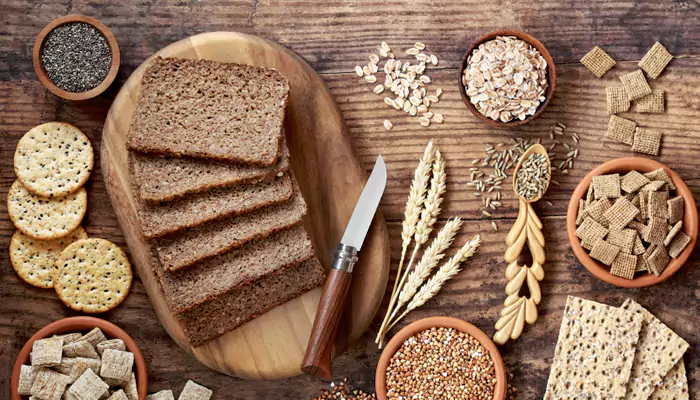
If you are diabetic, choosing the right bread becomes tricky. Always go for bread with no added sugars, a minimum of 3 grams of fiber per serving, and low sugar. To ensure safety, track your blood sugar level before and after consumption.
For type 2 diabetic patients, managing their diet may seem tedious. No one likes to go through multiple panels of nutritional information. If you have been diagnosed with type 2 diabetes, sooner or later, someone will likely disapprovingly look at your sandwich and say, “You should not eat bread.” You may overlook their know-it-all attitude, but it is essential to note that the remark is partially correct. There are some bread varieties that you can eat while you should avoid the others. The list below will help you identify some of the worst and best breads for patients with type 2 diabetes.
Unlike white bread, rye bread is produced from grains. It contains fewer calories (60 per slice), and its glycemic index score is 56-78. When searching for nutritious rye bread, you should consider trying pumpernickel because it's GI score is low. If you regularly consume pumpernickel bread, it can improve your overall well-being and health.
Rye flour is used to produce rye bread. The flour is crushed and then fermented using sourdough. When purchasing rye bread, check the ingredients because some bread may contain preservatives, additives, and processed sugars.
Tortillas are typically prepared using white flour, but if you have type 2 diabetes and are searching for a nutritional option for fajitas and wraps, try blue corn or corn tortillas. Blue corn tortilla has a GI score of 46. As revealed by studies, blue tortillas are 20 percent richer in protein than the white variant—making them the healthiest option for diabetics. You may also substitute white tortillas with whole wheat tortillas because they have a lower GI score than corn.
While the above-mentioned gluten-free bread variants are not always produced with a hundred percent whole grain, gluten-free rice, and corn breads are best for those who have both celiac disease and diabetes.
For diabetics, oats, wheat, and flax pita bread are some of the healthiest options. Pita bread is an amazing snack option or can be used as a homemade pizza base. Its protein content is 6 grams and contains 60 calories per slice.
People with type 2 diabetes will largely benefit from consuming oat bran because it is rich in fiber and it decreases the risk of heart disease. In addition, beta-glucan promotes digestion by slowing down the process, enabling your body to break down carbohydrates without spiking sugar levels.
Almond flour bread has a low glycemic index (GI) score. When compared to wheat flour, It contains fewer carbs and sugar. Switching to almond flour bread can help people with type diabetes maintain stable t blood sugar levels.

Consumption of any variety of bread containing sweeteners such as sugar, dextrose, molasses, or high fructose corn syrup is strictly prohibited for people suffering from type 2 diabetes. You should also avoid eating bread containing dried fruits or raisins as they have higher sugar content and carbs. Highly processed bread with low fiber is not healthy for your blood sugar levels. Some of the worst varieties of bread include white bread, French toast, pretzels, waffles, bagels, wraps, Italian bread, and more.
Avoid bread produced from white flour—and don’t get tricked by labels that read “seven grain” or “multigrain.” If the nutrition label on the packet does not read “whole,” that bread is not made of whole grain. Also, do not have bread without protein, as it might spike your blood sugar levels.